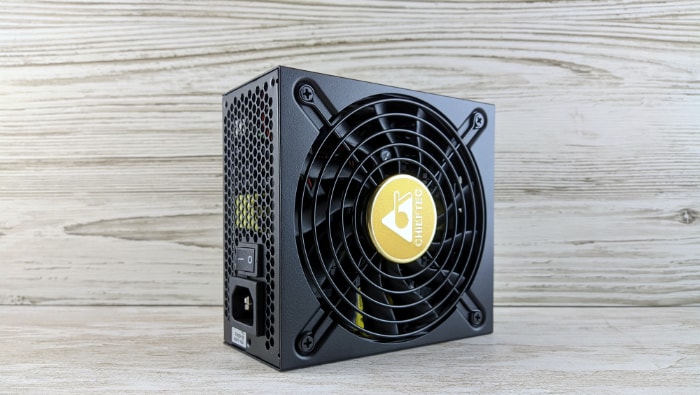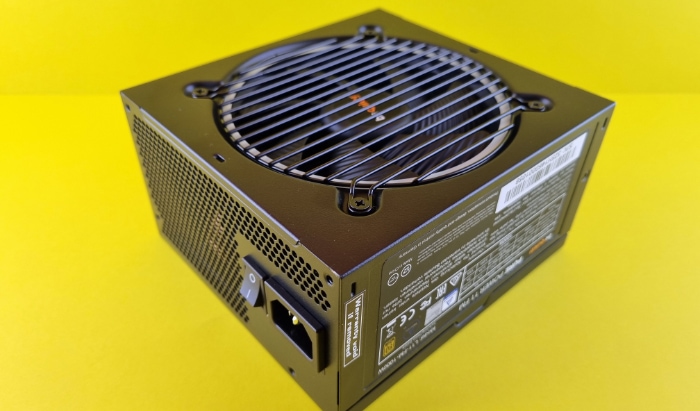PSU Fan Not Spinning? Troubleshooting and Solutions

Power Supply Units (PSUs) play a critical role in ensuring the smooth operation of your computer system. One key component of a PSU is its fan, which is responsible for cooling the unit and preventing overheating. The fan helps maintain optimal system performance by regulating temperatures and ensuring the longevity of your hardware.
However, there may be instances where you notice that your PSU fan is not spinning. In this blog post, we will discuss the importance of a PSU fan, the common reasons behind a non-spinning fan, and provide troubleshooting tips and solutions to help you address this issue. By understanding and resolving the problem, you can ensure the health and longevity of your computer system.
Symptoms of a Non-Spinning PSU Fan
Before diving into troubleshooting and solutions, it’s important to recognize the symptoms associated with a non-spinning PSU fan. Identifying these symptoms early on can help you address the issue promptly, protecting your system from potential damage or performance degradation.
Identifying the Signs of an Unresponsive PSU Fan
It’s crucial to be aware of the symptoms that indicate your PSU fan may not be functioning properly. Some common signs of an unresponsive fan include:
Unusual system temperatures: If your computer components are running hotter than usual, it could be due to the PSU fan not effectively dissipating heat.
Overheating or system shutdowns: A non-spinning PSU fan can cause your system to overheat, leading to unexpected shutdowns or performance throttling.
Audible noise changes: If you notice a change in your computer’s noise levels, such as the absence of the typical fan sound, it may be a sign that the PSU fan has stopped spinning.
Potential Consequences of a Malfunctioning Fan on Your System
Ignoring a non-spinning PSU fan can have detrimental effects on your computer system, such as:
Reduced component lifespan: Excess heat can lead to premature wear and tear on your hardware, shortening the lifespan of your computer components.
Decreased performance: Overheating can cause your system to throttle performance in an attempt to regulate temperatures, leading to a decline in overall system responsiveness and speed.
System instability: Prolonged exposure to high temperatures may cause your computer to experience instability, including crashes, freezes, or even data corruption.
How to Diagnose the Issue
Before you start troubleshooting the problem, you need to confirm that the PSU fan is indeed not spinning. You can do this by:
Visual inspection: Open your computer case and observe the PSU fan while the system is powered on. If the fan isn’t spinning, it’s time to investigate further.
Software monitoring: Use hardware monitoring software, such as HWMonitor, to check the fan speed and system temperatures. If the software shows a zero RPM reading for the PSU fan, it’s likely not spinning.
Troubleshooting a Non-Spinning PSU Fan
Once you’ve identified the symptoms of a non-spinning PSU fan, it’s time to troubleshoot the issue. This section provides a step-by-step guide to diagnosing the problem, ensuring you consider all possible causes before taking action.
Check the Power Connection
Before you delve deeper into the issue, ensure that the PSU is receiving adequate power:
Properly Connected PSU: Verify that the power cord is securely plugged into both the PSU and the power outlet. A loose connection can cause the PSU fan to stop spinning.
Test the Power Outlet: Try connecting your PSU to a different power outlet or use a known working device to confirm that the outlet is functioning properly.
Inspect the Fan for Physical Damage
Visually examine the PSU fan to identify any signs of physical damage:
Broken or Bent Fan Blades: Damaged fan blades can cause the fan to become unbalanced and stop spinning. In such cases, a replacement may be necessary.
Dust and Debris Buildup: Excessive dust or debris accumulation can obstruct the fan’s movement, preventing it from spinning. Cleaning the fan and surrounding area might resolve the issue.
Verify Fan Functionality
Perform the following tests to ensure that the fan itself is functioning correctly:
Test the Fan Using a Multimeter: Carefully use a multimeter to check the voltage across the fan’s connector pins while the PSU is powered on. If there is no voltage or it’s below the fan’s rated voltage, the PSU or its fan control circuit may be at fault.
Test the Fan on Another PSU or Motherboard (if possible): If you have access to another compatible PSU or motherboard, try connecting the fan to it. If the fan spins when connected to the alternate PSU or motherboard, the issue likely lies with your original PSU.
Confirm the Fan’s Operational Mode
Some PSUs are designed to operate with passive cooling at low loads, meaning the fan will not spin until a specific load or temperature is reached. Ensure you’re not mistaking this feature for a faulty fan.
Solutions for a Non-Spinning PSU Fan

After identifying the cause of your non-spinning PSU fan, you can explore various solutions to fix the issue.
Cleaning the Fan and Its Surroundings
If dust and debris are preventing the fan from spinning, follow these steps to clean the fan:
Safely Removing Dust and Debris: Power off your computer and unplug the PSU. Use compressed air or a soft brush to gently clean the fan blades and surrounding area, ensuring not to damage any components.
Ensuring Proper Airflow Around the PSU: Make sure there is adequate space around the PSU for proper airflow. Reorganize your computer’s internal components if necessary to prevent obstruction and promote better cooling.
Replacing a Damaged Fan
If the fan is damaged or not functioning properly, you may need to replace it:
Selecting the Appropriate Replacement Fan: Choose a fan that is compatible with your PSU model, considering factors such as size, voltage, and connector type. Consult your PSU’s documentation or manufacturer’s website for specific requirements.
Step-by-Step Guide to Replacing a PSU Fan: Power off your computer and unplug the PSU. Carefully open the PSU casing, following the manufacturer’s guidelines to avoid damaging any components or voiding the warranty. Disconnect the faulty fan, replace it with the new one, and reassemble the PSU. Test the new fan to ensure it’s functioning correctly.
Upgrading to a Better PSU
If the issue persists or you suspect that your PSU is not sufficient for your system’s needs, consider upgrading to a more suitable PSU:
Evaluating Your System’s Power Requirements: Determine the power requirements of your computer components, including the CPU, GPU, and other peripherals. Use online calculators or consult component documentation to estimate the total wattage required.
Choosing the Right PSU for Your Needs: Select a PSU that not only meets your power requirements but also offers high efficiency, a reputable brand, and reliable fan control features. This will help ensure proper cooling and stable performance for your system.
Preventive Measures
Taking preventive measures can help ensure the longevity and optimal performance of your PSU fan and computer system. Consider implementing the following practices:
Regular Maintenance of the PSU and Its Fan
Routine maintenance can significantly reduce the chances of encountering a non-spinning PSU fan:
Clean the Fan Periodically: Schedule regular cleanings of the fan and its surroundings to prevent dust and debris buildup that can impede its operation.
Inspect the Fan for Damage: During cleaning, visually inspect the fan blades for signs of wear, cracks, or other damage that may affect its performance.
Investing in High-Quality PSU Models
Purchasing a high-quality PSU from a reputable brand can help prevent issues with the fan and overall PSU performance:
Prioritize Efficiency and Reliability: Look for PSUs with an 80 PLUS certification, which indicates higher efficiency and reliability.
Research Reviews and Recommendations: Consult expert reviews and user feedback to make an informed decision when selecting a PSU for your system.
Monitoring System Temperatures and Fan Speeds
Keeping an eye on your system’s temperatures and fan speeds can help you identify potential issues early on:
Use Hardware Monitoring Software: Install software, such as HWMonitor, to regularly monitor temperatures and fan speeds in your system.
Set Custom Fan Profiles: If your PSU supports it, customize the fan’s behavior using the manufacturer’s software or through the BIOS, setting temperature thresholds or fan curves to suit your specific needs.
By implementing these preventive measures, you can minimize the risk of encountering a non-spinning PSU fan and ensure the efficient operation of your computer system.
Conclusion
In summary, a properly functioning PSU fan is essential for maintaining optimal system performance and preventing overheating. By understanding the symptoms of a non-spinning PSU fan and following the troubleshooting steps provided, you can diagnose and resolve the issue effectively.
Moreover, taking preventive measures, such as regular maintenance, investing in high-quality PSUs, and monitoring system temperatures and fan speeds, can help minimize the risk of encountering this problem in the future. By keeping your PSU fan in good working condition, you can ensure the health and longevity of your computer system, allowing it to operate efficiently and reliably for years to come.


